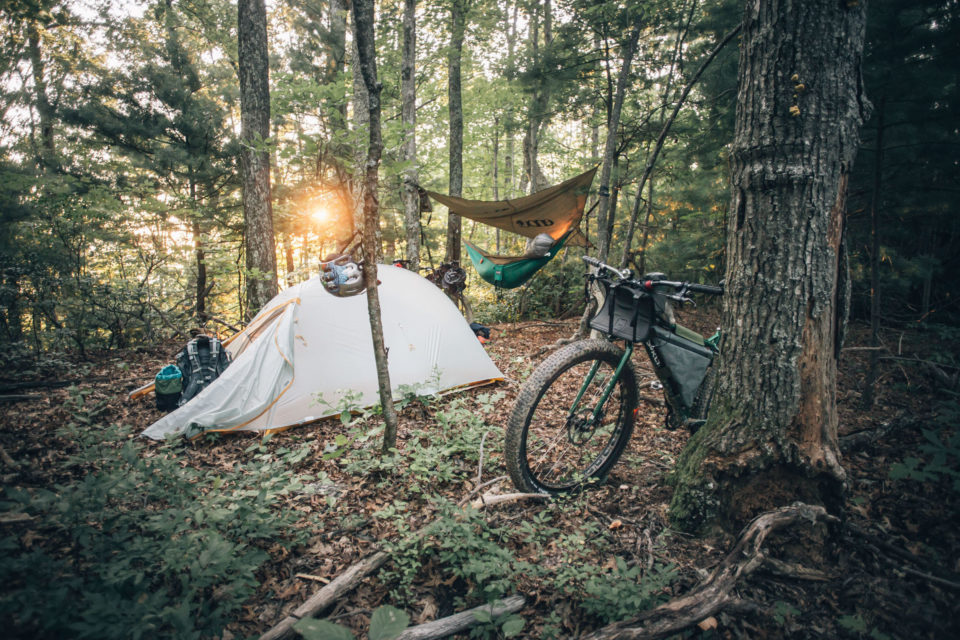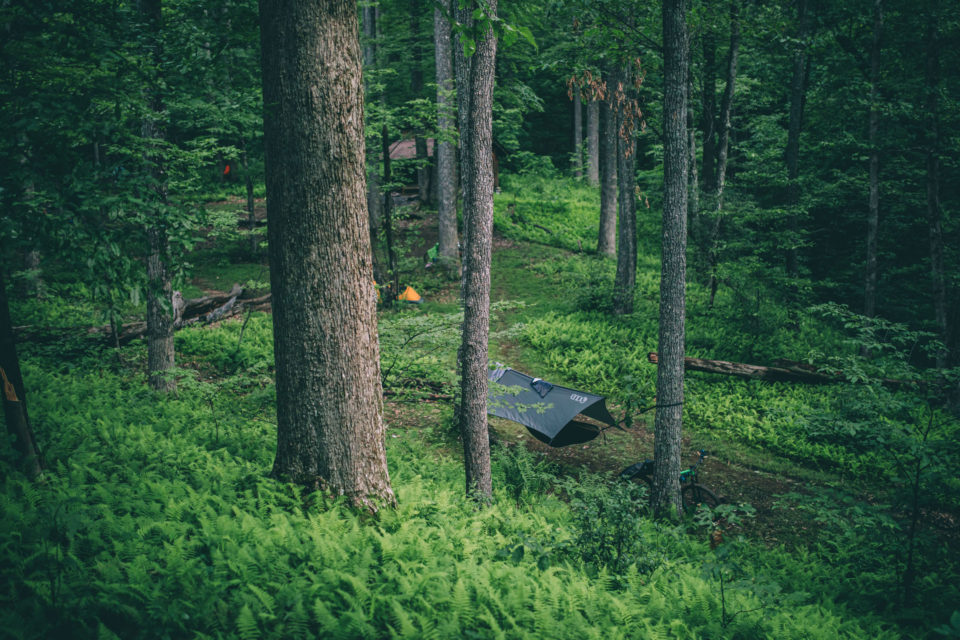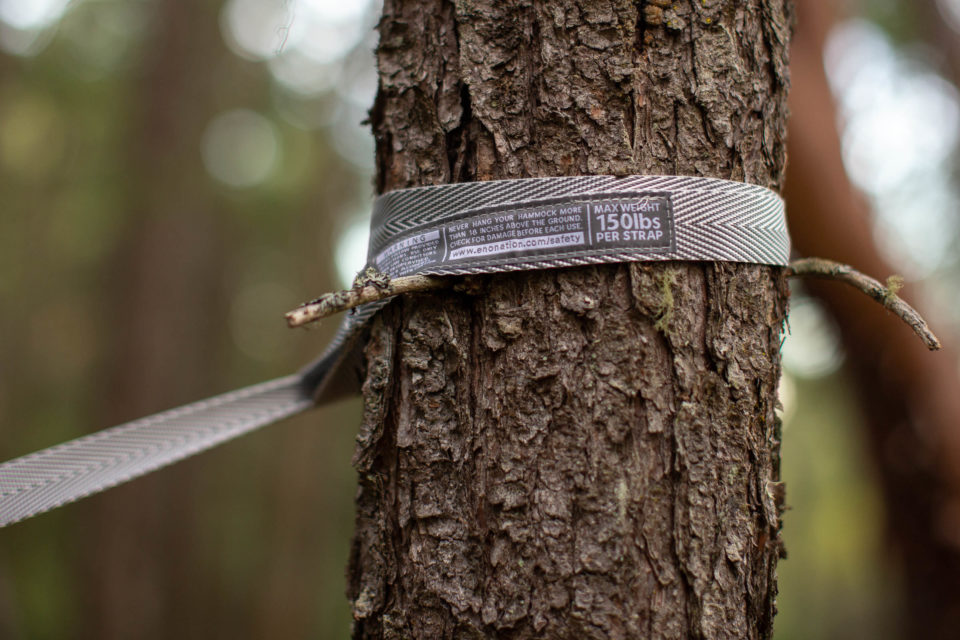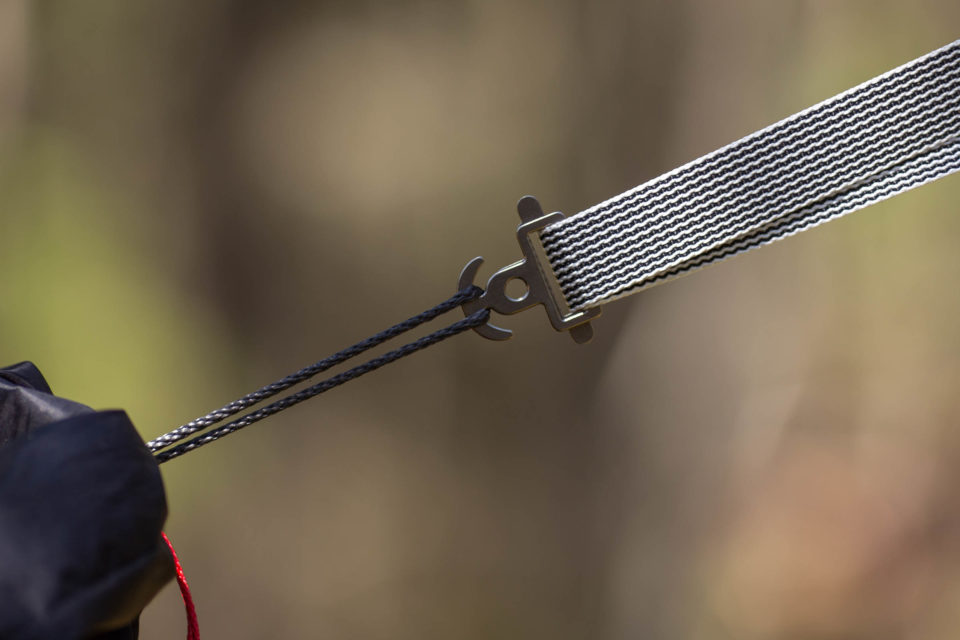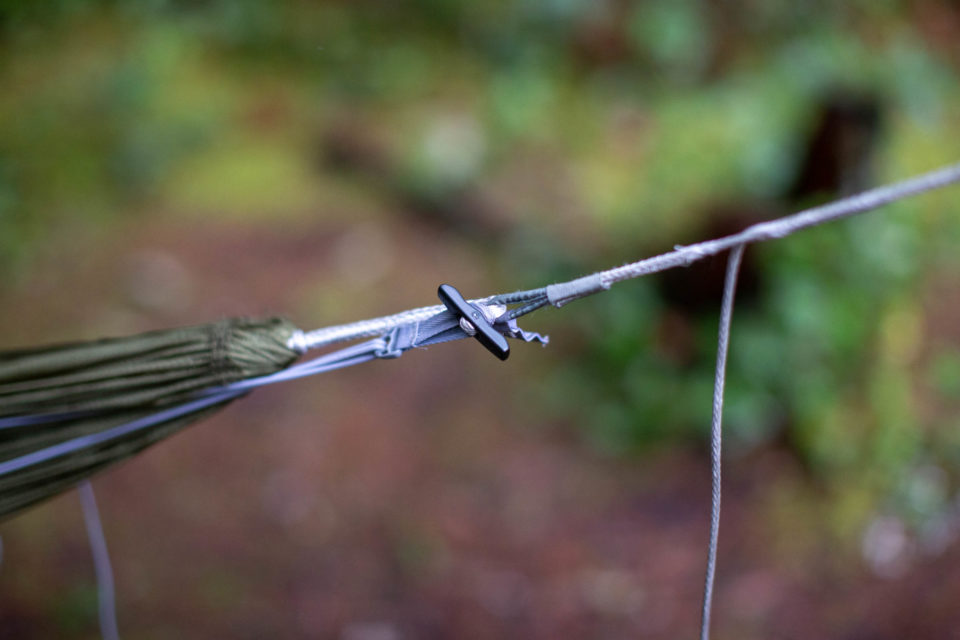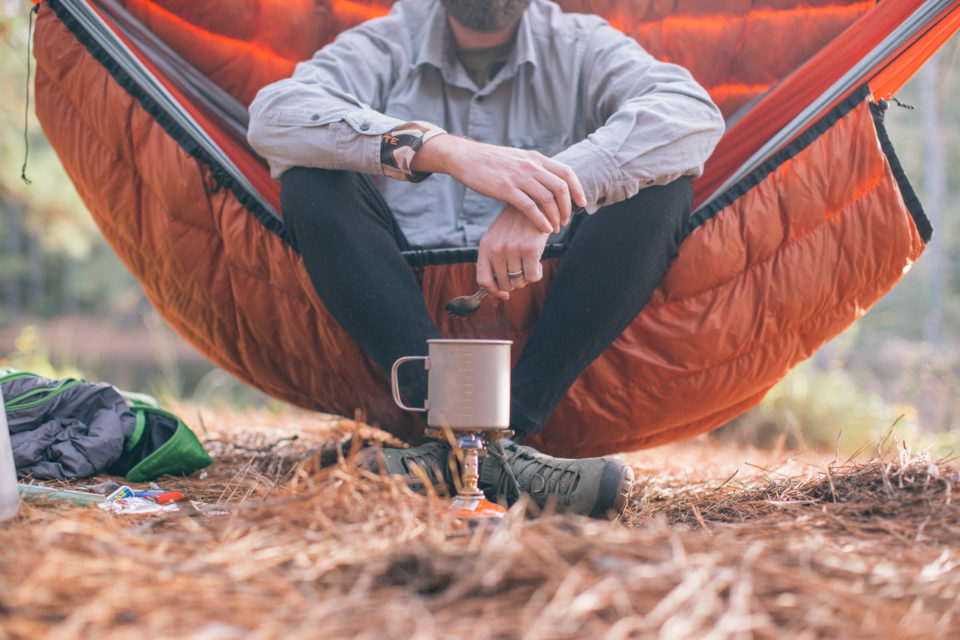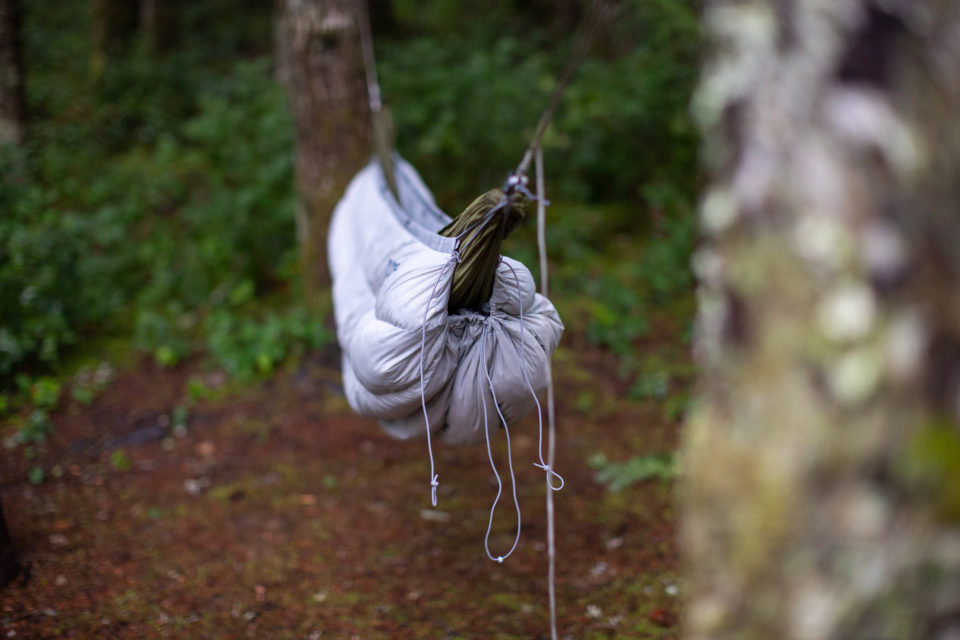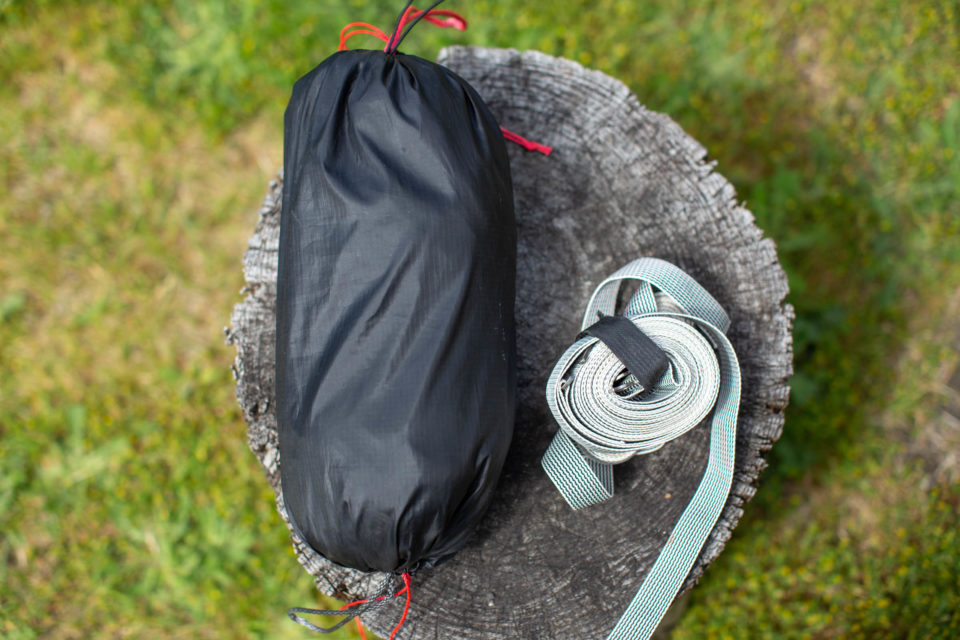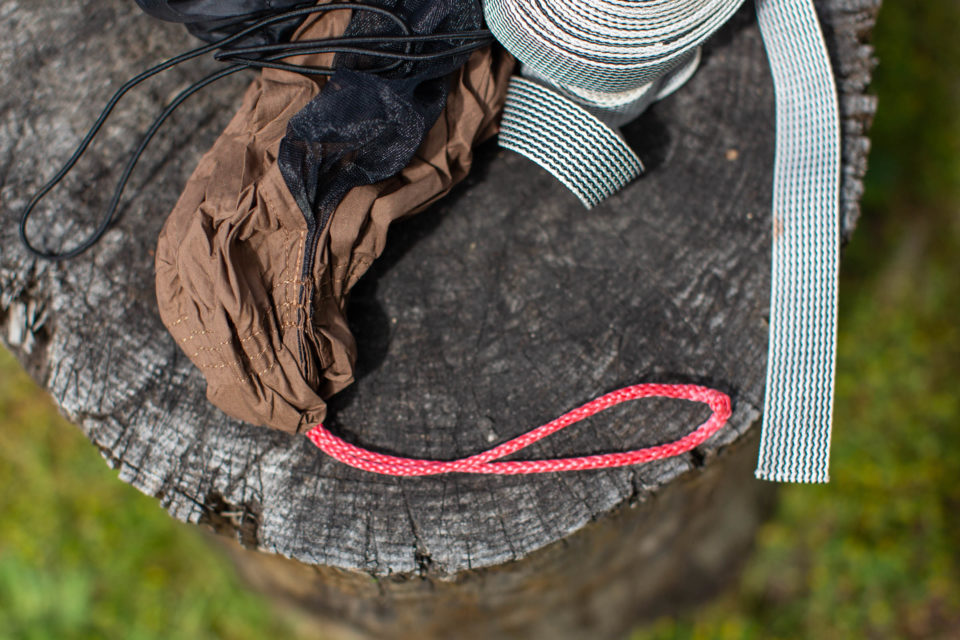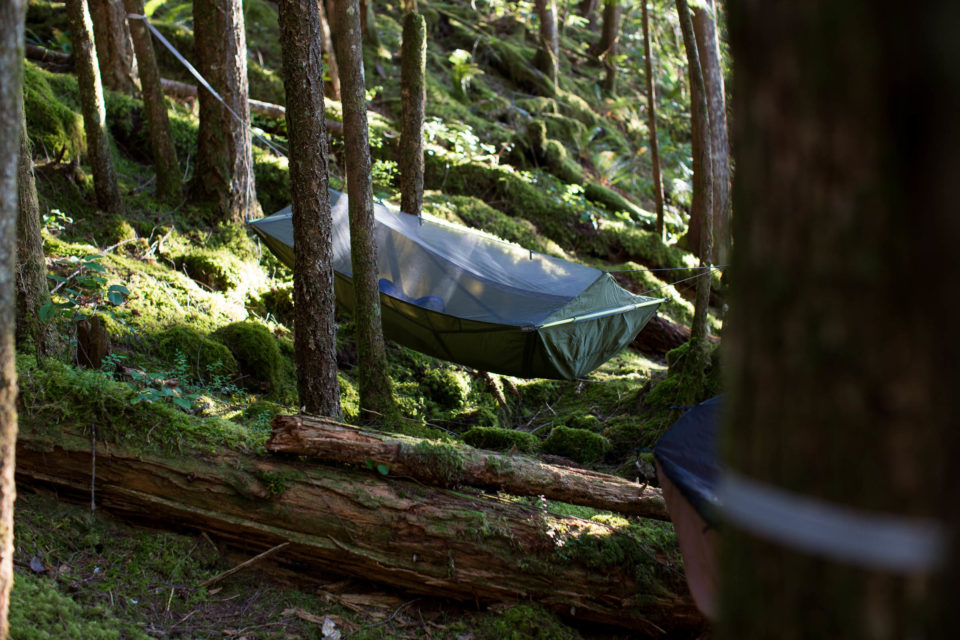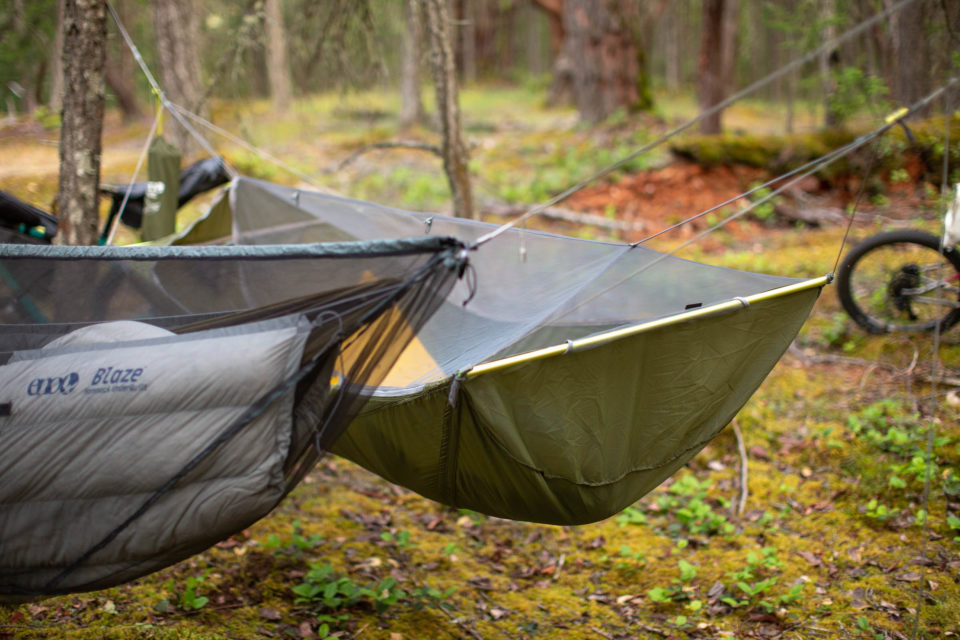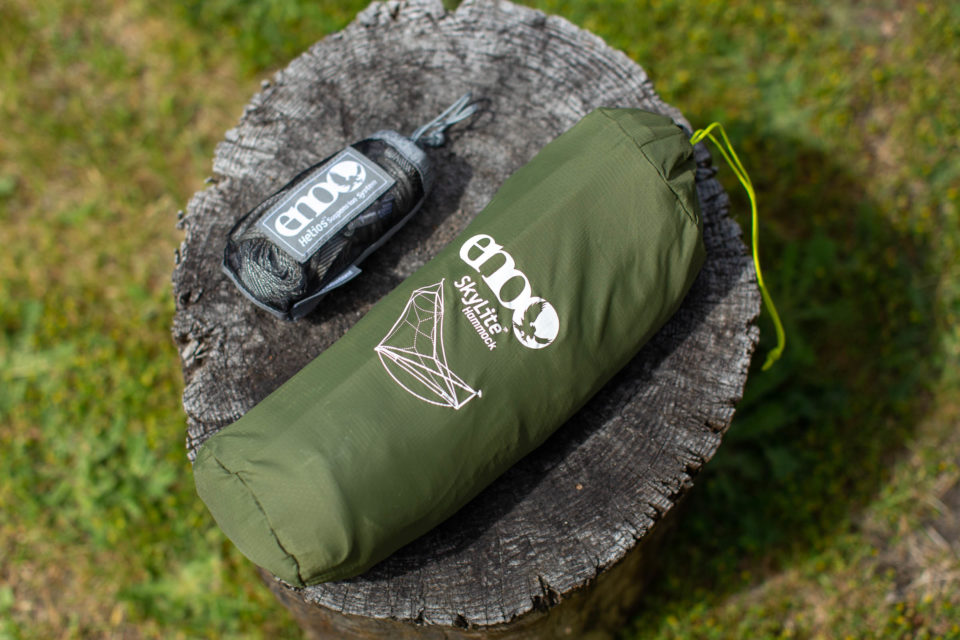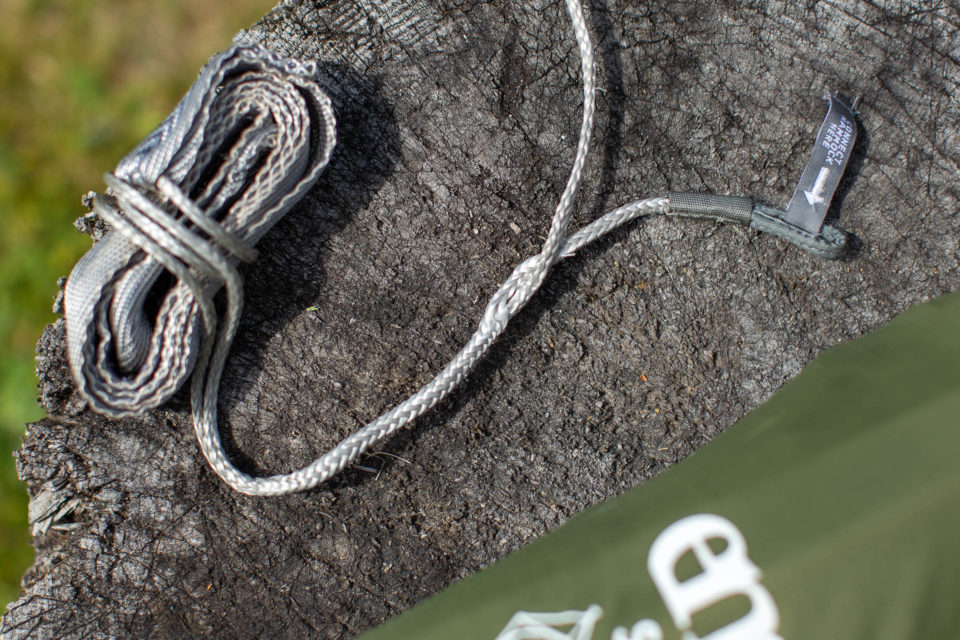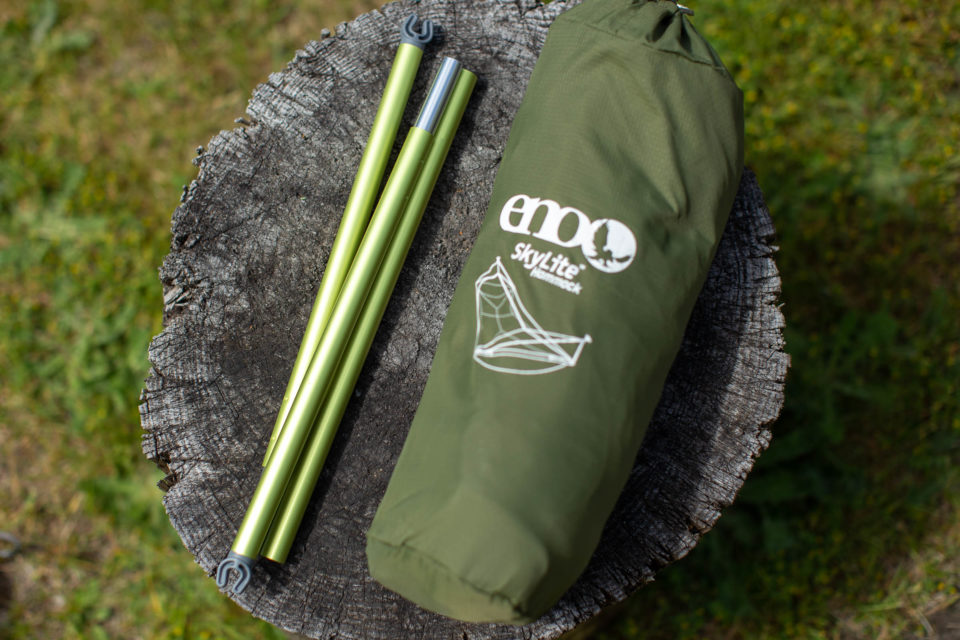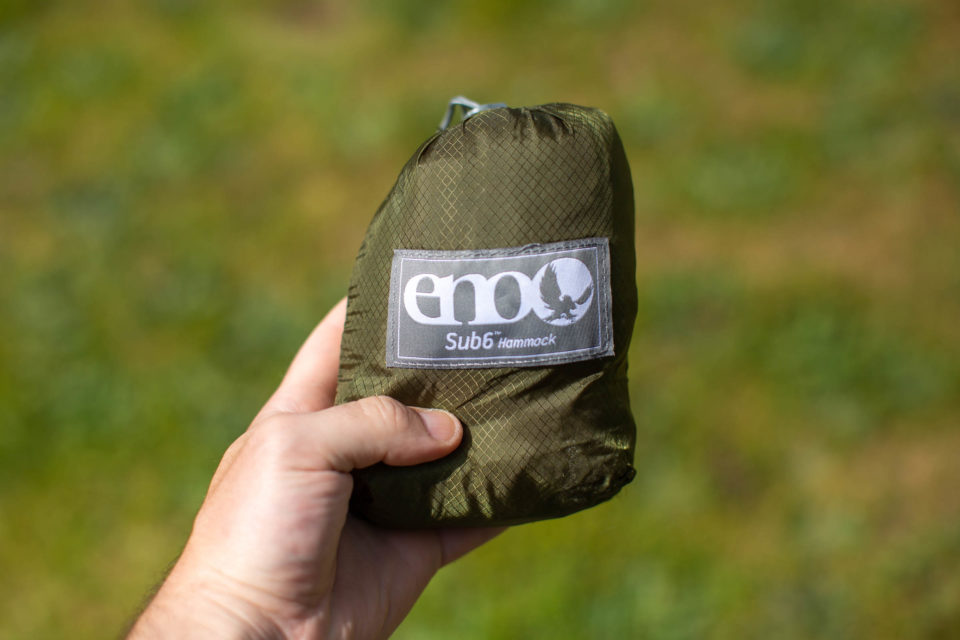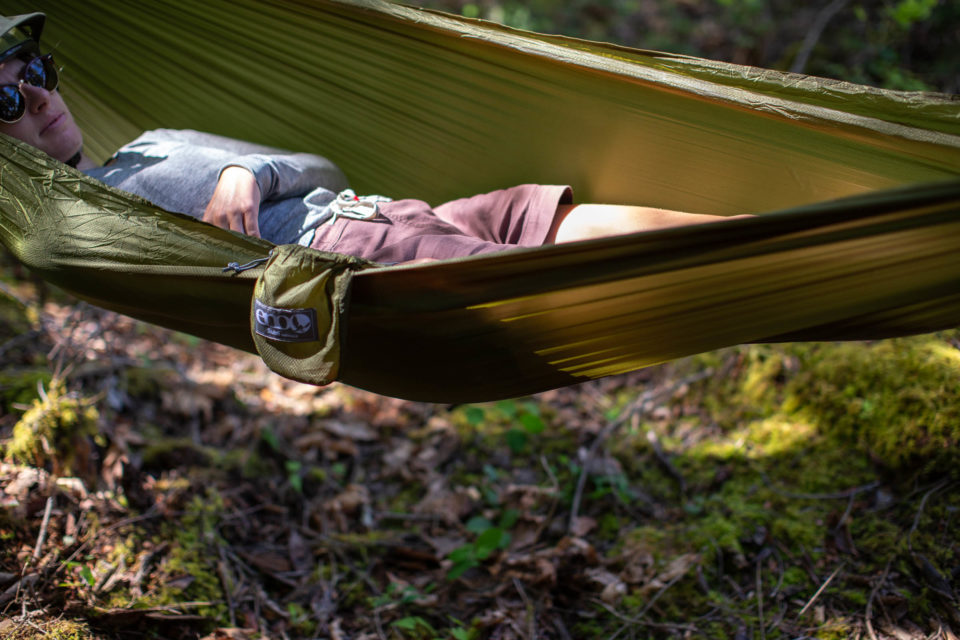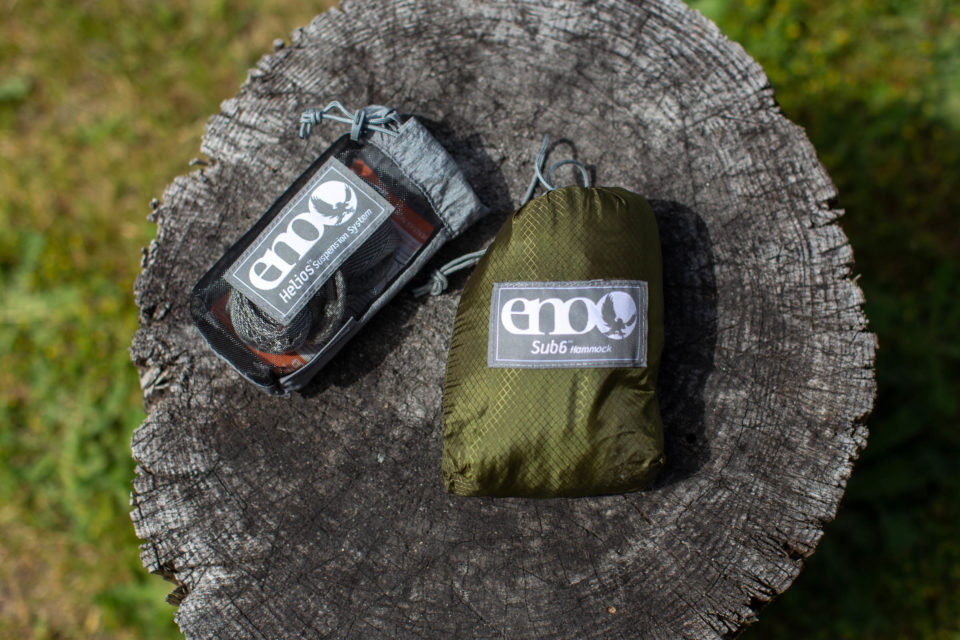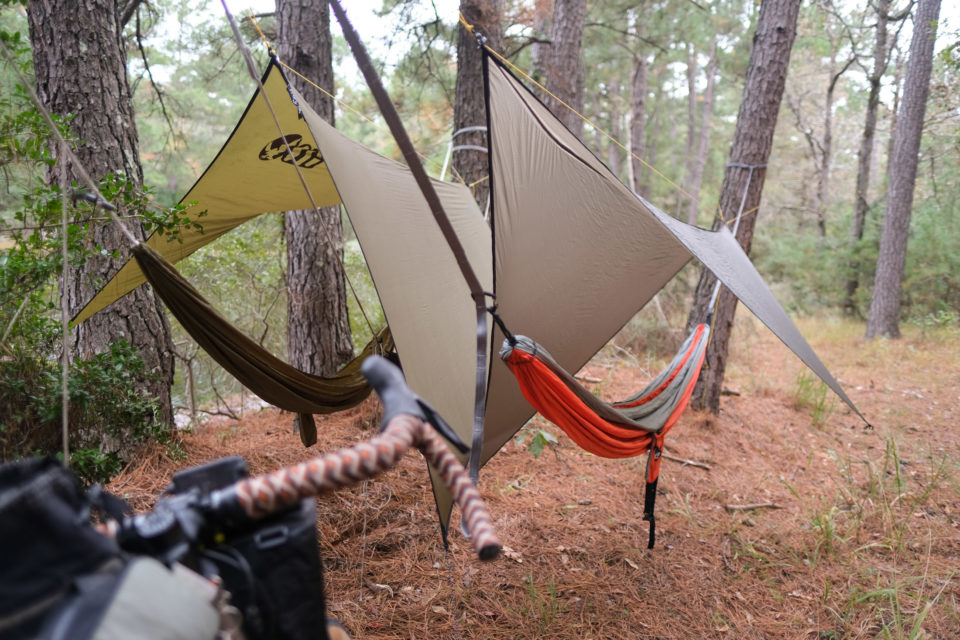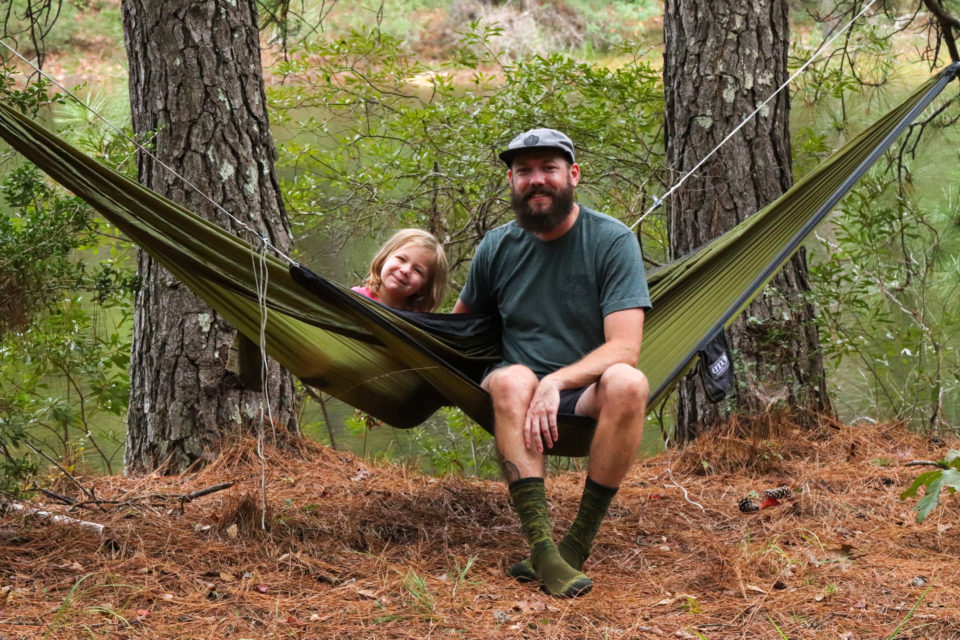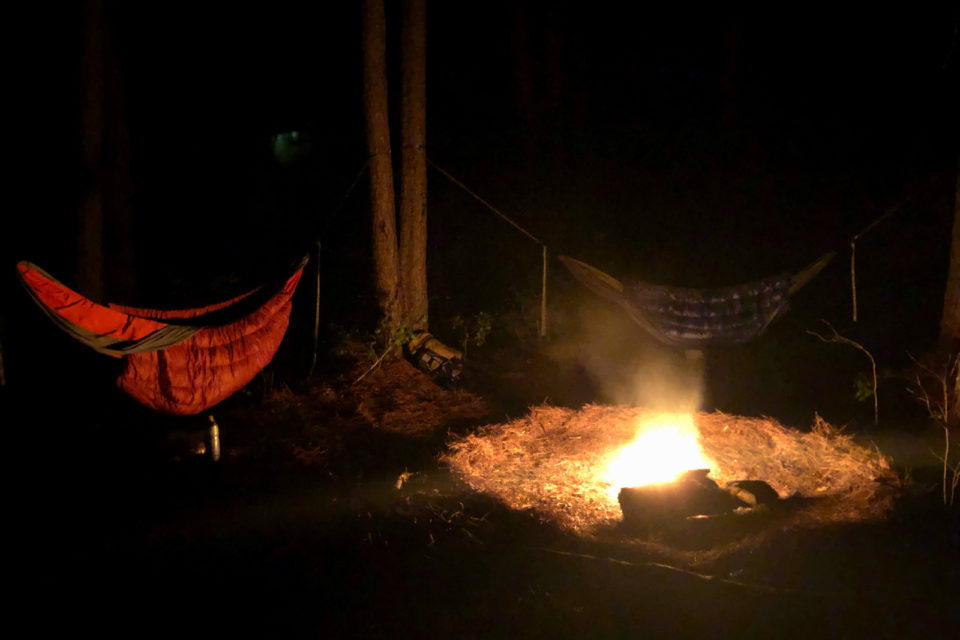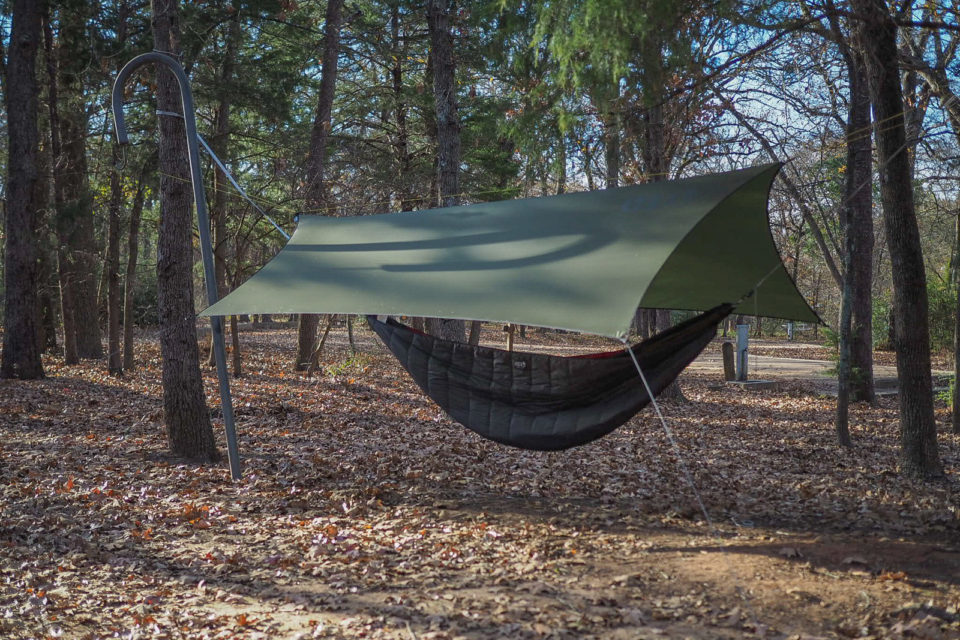Bikepacking with a Hammock: An Introduction
Share This
Keen to try sleeping between two trees? Over the last year, we’ve been testing three different styles of hammocks from Eagles Nest Outfitters and Dutchware to see what the fuss is all about. Find our thoughts on those here, as well as an introductory guide to what you need for a reliable bikepacking hammock setup, thoughts from a hammock aficionado, and more…
Sleeping in a hammock is a contentious topic among outdoor enthusiasts, bikepackers included. There are the diehards who claim their soundless night’s sleep is thanks to their cocoon in the trees, and then there are those who stick to a traditional tent—either unconvinced by suspended sleeping or unwilling to find the perfectly spaced trees required. All jokes aside, integrating a hammock into your bikepacking sleep system has its benefits, and when done properly, has the potential to provide a very comfortable night’s sleep.
I fit somewhere in between these two groups and am certainly hammock-curious. Over the last year, I’ve tried out a few of the most popular designs to see what all the fuss is about. Read on for an introduction to the necessary components of a hammock system, followed by my thoughts on some options from Eagles Nest Outfitters (ENO) and Dutchware. I’ve also included some thoughts from an experienced hammock user, Patrick Farnsworth of the Bikes or Death Podcast, who has plenty to say on the topic.
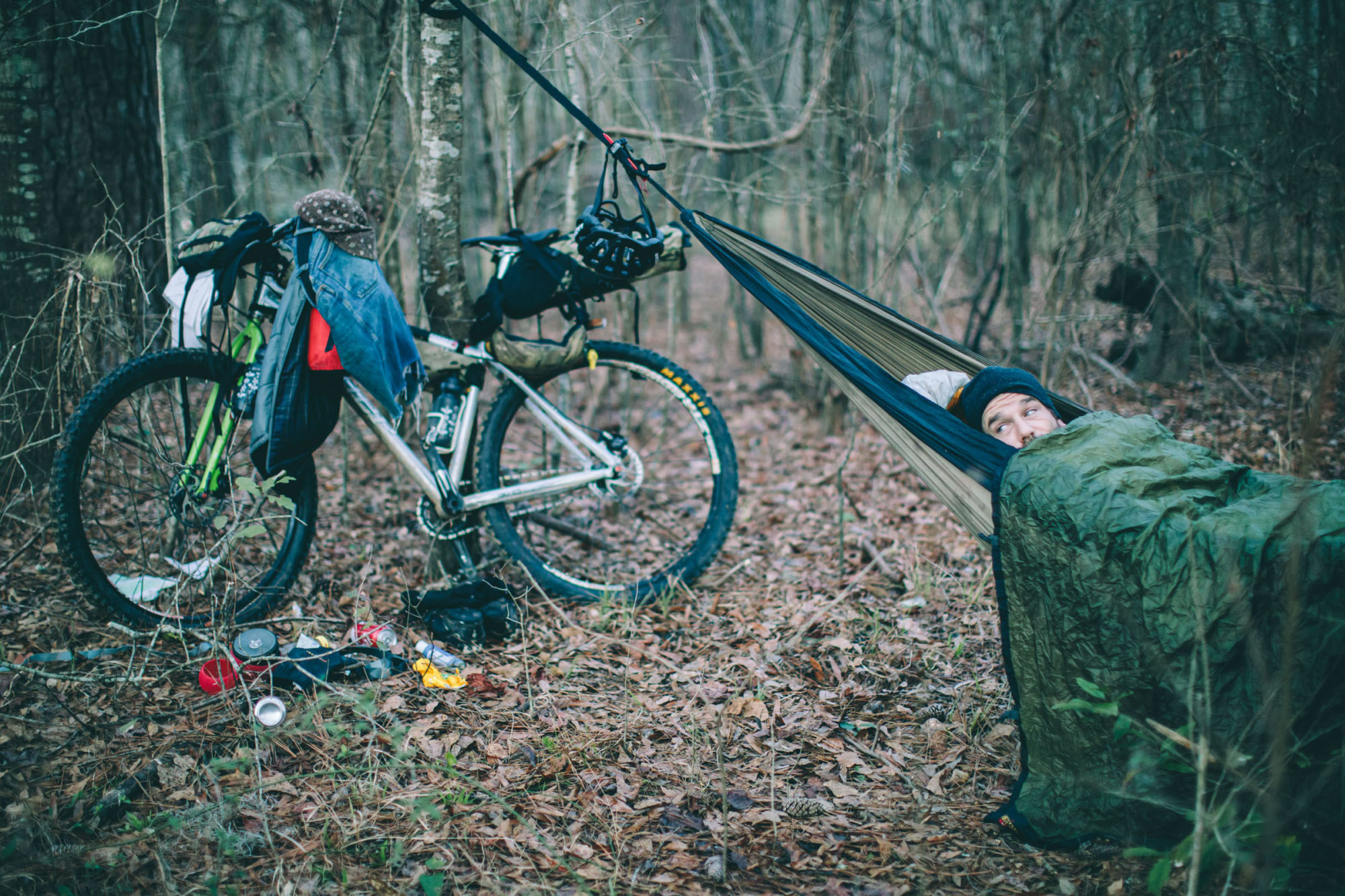
Anatomy of a Hammock
Although there are a few complete hammock camping kits out there, most hammocks don’t actually include everything you need to spend a night outside comfortably. They require straps, or suspension, to secure the hammock to two trees; insulation to keep you warm; and depending on where you live in the world, a tarp or bug net. Below you’ll find a breakdown of the various hammock components that you should be familiar with.
Hammock
Often made with a single sheet of 40-70D nylon, hammocks require two tie-offs at either end to suspend them between two trees. The lightest options will provide no integrated bug or weather protection, while more complete systems offer interchangeable bug net and rain-proof canopies. Most hammocks require the user to sleep on an angle to properly support their weight and to avoid sleeping in an uncomfortable “U” shape lengthwise. There are many different lengths, widths, and styles, as well as numerous talented manufacturers making them all over the world. For the most part, these are designed specifically with camping in mind and aren’t the recreational “parachute” style hammocks you’d use in a park. Keep an eye on weight limit ratings, as these vary between brands and models, and sometimes aren’t as strong as you might think.
Suspension
Suspension refers to the system of straps, hardware, and cordage that attaches the ends of the hammock to the trees. To avoid harming the tree, a wide webbing type strap should be used on one end, with some kind of adjustable portion where the hammock attaches. More adjustment is better to achieve the perfect pitch, and manufacturers have designed all sorts of different ways to keep the weight down while providing a safe and secure setup. They might come in the form of titanium hardware, Dyneema straps, daisy chains, and ultralight alternatives like ENO’s Helios Ultralight Suspension System, which relies on a unique bury splice to provide unlimited adjustments with no knots or added hardware.
Tarp
Depending on where you’re bikepacking, packing a tarp may not be mandatory for every trip, but it’s something to be aware of. Once again, there are endless options, shapes, and sizes that will often come down to personal preference and the conditions you’re sleeping in. In many cases, an ultralight tarp that simply provides an overhead shelter will be enough. However, for those hoping for four-season protection or winter readiness, a larger tarp that provides 360° coverage might be needed. For those of us who weren’t Scouts growing up, some tarps will come with hardware for a knotless setup, while others require some light tarpology.
Overquilt and Underquilt
Hammocks still require some kind of insulation to stay warm at night, the most common being over quilts and under quilts. Over quilts are similar to sleeping bags but eliminate the back portion of the bag and act more like a blanket than a mummy-style sleeping bag. However, sleeping pads and hammocks aren’t as easy to pair together. In addition, your body compresses a sleeping bag’s down or synthetic down insulation, which then loses its insulation properties. And since a hammock is suspended, not having any insulation below can be quite bone-chilling. An underquilt, on the other hand, is suspended below the hammock, so isn’t compressed and retains loft to provide insulation.
Sleeping Pads
Several brands offer hammock-specific sleeping pads that are shaped a little differently than traditional pads to conform to the hammock’s curves. Klymit and ENO both offer hammock pads with “wings” that help insulate further up the sides of the hammock, as well as a winged add-on that can be used in conjunction with a standard pad. We’ve also heard that some people have had success using closed-cell foam pads like the Therm-a-Rest Z Lite, emergency blankets, or even just deflated sleeping pads.
Accessories
Other optional accessories include removable bug nets, including some that slip over the entire hammock system, such as the ENO Guardian Bug Net (pictured below) or Dutchware’s bug net that zips directly to the hammock body. Top covers are great for when the temperature drops and help keep warmth inside the hammock. Not all hammocks have integrated ridgelines, which is a thin rope that runs across the top of the hammock, holding bug nets and tarps away from the hammock, and providing a great place to lash gear. There are also loads of hammock-specific add-ons that help with gear organization in or suspended from the hammock in some way.
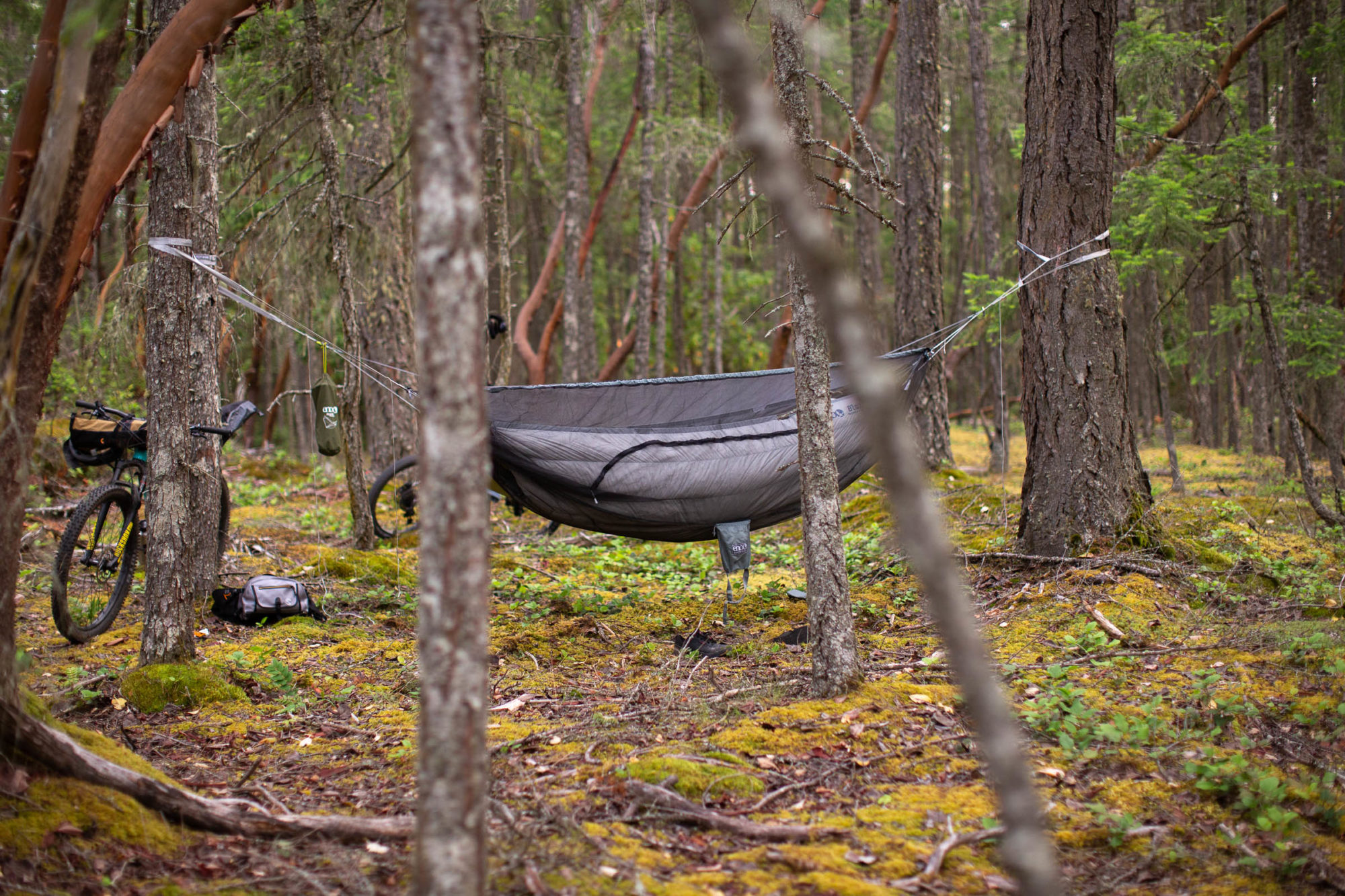
3 Hammocks Tested
Over the past year, we’ve tried out three popular and well-regarded hammocks. Find thoughts on each below. Then scroll down for a larger list of options we gathered.
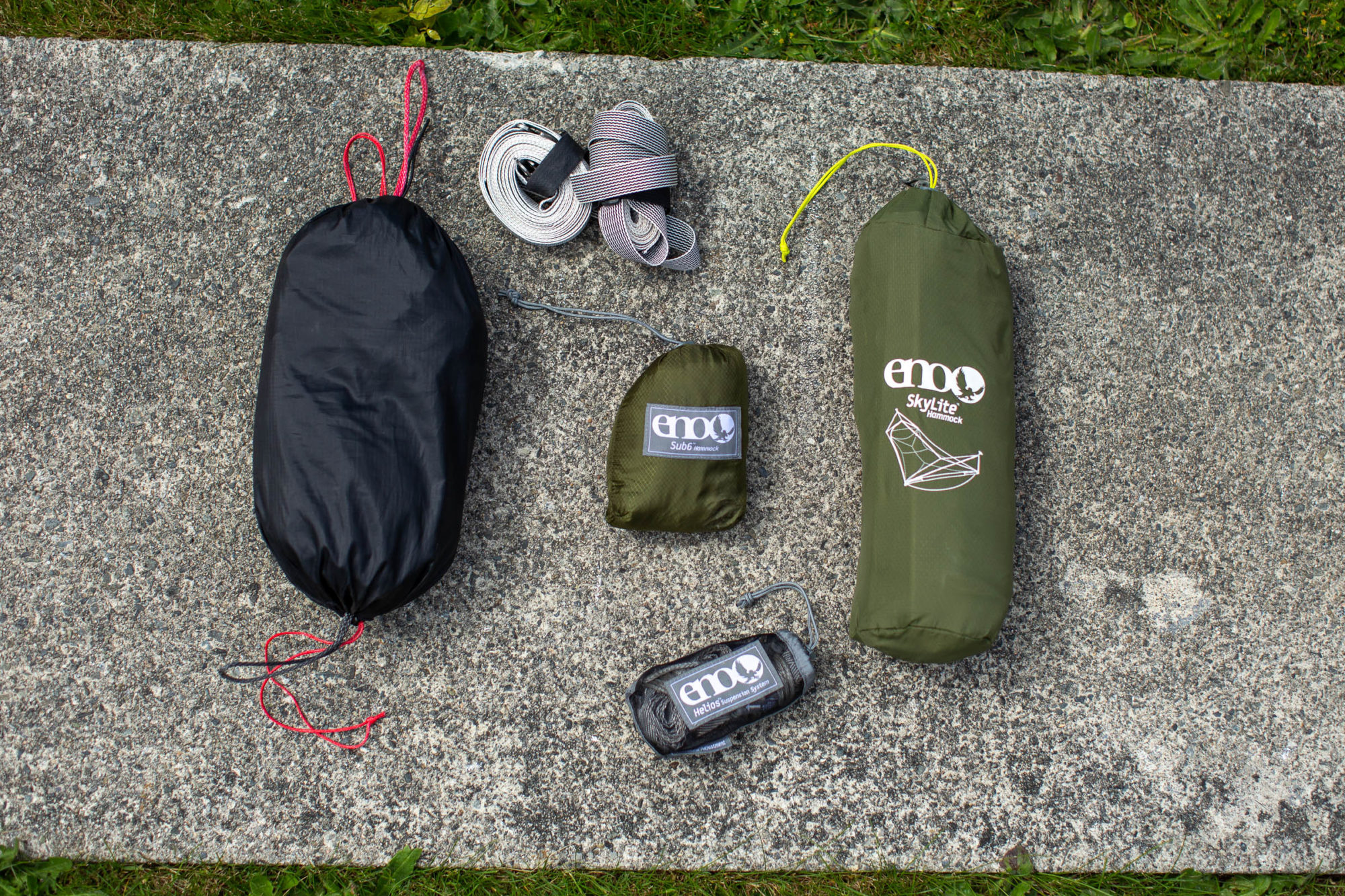
Dutchware Chameleon
Dutchware is a big name in the hammock and DIY gear world, and they’ve created quite the reputation for themselves in the time they’ve been around. In 2017, Dutchware launched a Kickstarter campaign to fund their Chameleon hammock, designed to be the ultimate in weight, versatility, and comfort. It turns out it’s one of the most popular options out there, and it’s made in the USA. The Dutchware Chameleon sets itself apart from other hammocks with an almost overwhelming number of fabric options, colours, and specifications to choose from. I tested out the Chameleon complete with an integrated bug net and their Beetle Buckle suspension system.
The Dutchware Chameleon is well designed and a good example of a high-quality, lightweight hammock. The removable, zippered bug net was easy to use and made getting in and out straightforward, the ridgeline provided plenty of space inside the hammock, and the kit packed down nice and small to make room for insulation and a tarp. Although a little bulky, their Beetle Buckle suspension system provides a quick, adjustable setup that was easy to figure out as someone new to hammocking. I actually enjoyed using them so much that I ended up pairing them with the other hammocks I tested, too.
Pros
- Lightweight and packable
- Modular design and high-quality construction
- US-made
Cons
- Must sleep diagonally
- Add-ons can get expensive
- Material (as tested): Hexon 1.2
- Hammock Weight: 582 grams
- Beetle Buckle Weight (pair): 200 grams
- Max Weight: 200-350lbs
- Place of Manufacture: Pennsylvania, USA
- Price: $204 USD (hammock, bug net, and suspension)
- Manufacturer’s Details: DutchwareGear.com
ENO SkyLite
The Eno SkyLite is a tent-inspired hammock that uses two aluminum DAC struts to spread the hammock out into what is supposed to be a more supportive sleeping experience. Even with the additional hardware, the SkyLite still packs down reasonably small and includes an integrated ridgeline and bug net. Since the body is less cocoon-like, there are a couple of interior pockets to organize small items, and the zippered door holds its shape well.
At 2lbs, the ENO SkyLite was the heaviest of the three hammocks I tested, but it was definitely the easiest to transition to coming from a lifetime of sleeping in tents. The struts do a great job at tensioning the body of the hammock, which in turn allows you to sleep however you’d like, instead of diagonally like the other two hammocks. ENO sent their Helios Ultralight Suspension System along, which is made from Silverlite cord and 1000D polyfilament webbing and uses a knotless bury splice tension design that is easy to use and very lightweight. The only complaint I have is that sometimes they weren’t quite long enough to span between certain trees, but I guess that’s a drawback of hammocks in general.
Pros
- Perfect for newer hammockers
- Lots of internal space and easy to move around
- Integrated bug net
Cons
- Fairly heavy and bulky
- Suspension not included
- Material: 40D Nylon
- Hammock Weight: 735 grams
- Helios Suspension Weight (pair): 119 grams
- Max Weight: 250lbs
- Place of Manufacture: Asia
- Price: $169.95 USD (hammock only)
- Manufacturer’s Details: EaglesNestOutfittersInc.com
ENO Sub6
The Sub6 is ENO’s lightest hammock. At 162 grams and a pack size about the size of a can of soda, it’s easily one of the smallest and lightweight hammocks out there, but it’s also much more pared back than the other two I tried out. It’s constructed from 30D ripstop nylon, Dyneema fiber, and aluminum suspension toggles that pair well with their Helios Suspension System. It’s also the shortest hammock of the bunch and doesn’t include key features like a bug net, ridgeline, or any exterior attachment points for quilts or accessories.
Although the pack size and weight are attractive from a bikepacking perspective, the lack of features and size of the ENO Sub6 usually had me wishing for more. Although ENO sent along their Guardian SL Bug Net to create a more complete system, it just never felt like enough hammock for anything more than an overnighter or for something to hang out in at camp.
Pros
- Lightweight and packable
- Affordable
- Rated for 300lbs
Cons
- Minimalist design won’t be for everyone
- Short and not roomy
- Material: 30D Nylon
- Hammock Weight: 162 grams
- Max Weight: 300lbs
- Place of Manufacture: Asia
- Price: $69.95 USD (hammock only)
- Manufacturer’s Details: EaglesNestOutfittersInc.com
Thoughts from a Hammock Afficianado
By Patrick Farnsworth (@bikesordeath)
Hammock camping isn’t for everyone. I learned that pretty quickly after trying to introduce my best friend and partner to what I thought was sleeping nirvana. Each of them gave it two fair shakes before swearing them off forever. On the other hand, I love ’em! I find that the hammock hugs me and rocks me to sleep, all while keeping me off the ground, which usually leaves me stiff and sore in the morning.
I learned about hammock camping early in my bikepacking journey. I was researching compact, lightweight sleeping systems when I found them. It was love at first sight. Part of what sold me on hammock camping is the imagery of it, honestly. It just looks fun and relaxing to hang and sway with the wind, and it seems so much more freeing than a tent, more open to the night sky (assuming no rain, of course). I never really loved tent camping, preferring cowboy camping when possible, but then you’ve got your spiders, scorpions, and snakes to think about. They don’t generally bother me too much, but if an option to get elevated exists, why not explore it?
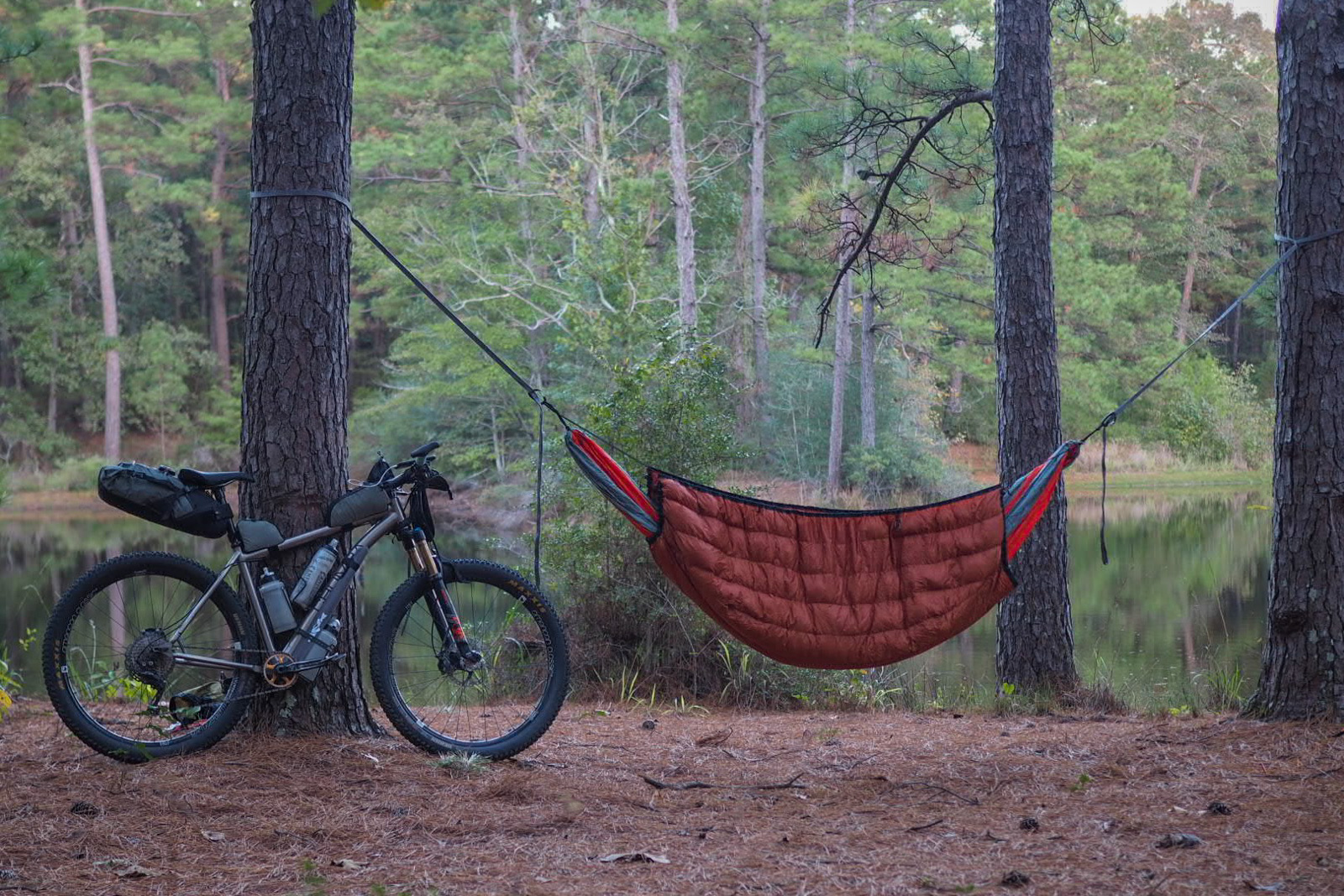
Ultimately, you will need to create your own pro/con list and determine if hammock camping is worth a shot. If it is, you may be interested to know more about what I use. As an avid outdoorsman on a quest for the right gear for every conceivable scenario, I have amassed a healthy haberdashery of options. I’ll share with you some of my favorites. Keep in mind, I’m a budget-conscious shopper. I’m not looking for the cheapest option, but rather the best option at the most affordable price. Maybe this will help make hammock camping more accessible for others to try!
The hammock I reach for almost every single trip is the ENO SuperSub Hammock, which weighs 9.8oz. I also have the ENO Sub6 Ultralight, which weighs 5.8oz. Although it’s rated for 300 lbs, at 6’2” it’s a tad on the small side. I’ve used it plenty and will continue to whenever weight or space is an issue, but when not factoring for those I will opt for the SuperSub. The extra 4oz. is worth the comfort in my book. ENO also has its own suspension strap that is designed to work with these hammocks and they come in two sizes, Helios Ultralight and Helios XL. I originally started out with the Helios Ultralight straps, but every once in a while there was a tree that was just out of reach, so now I have both the XL and the Ultralight, and again, where space and weight aren’t considerations I will opt to take the Helios XL straps for the convenience they provide.
My tarp is a Hennessy Hammocks Hyperlite that was the first tarp I ever bought. It’s not very big, definitely a minimalist option, but I’ve found it works fine even in a pretty good downpour. I do have some larger tarp options if I think the weather is looking particularly bad or if I’m needing enough room for two people.
The rule of thumb is that below 60º most people will want an underquilt to go around the hammock, like a sleeping bag. The airflow is great during the summer, but it also means you feel the cold more, so for cool to cold weather camping, you’ll want a top and bottom quilt. There are lots of options on the market, but I would recommend that you stick with down fill. I’ve tried some of the synthetic stuff and it’s not near packable enough to be practical. They get pretty pricey, though! I purchased top and under quilts from the Hang Tight Shop on Etsy, and they’ve proven to offer great value and quality. There are also YouTube videos on how to make your own if you’re better with a sewing machine than me.
The last piece of gear in my setup is a simple ridgeline that I made myself, but you can buy them as well. These are nice for getting your tarp in the perfect position and then making it more taught. Now all you need is a couple of trees about 15 feet apart and you’re all set.
More Hammock Options
I’ll wrap this up with some options that are worth looking into for those considering giving hammocks a shot. I’ve put together a list of some highly rated hammocks, insulation, and tarps that came up during my initial research, although there are plenty of other options out there and lots of local makers whho are producing fantastic gear.
Hammocks
- ENO Sub6
- ENO SuperSub
- ENO SkyLite
- Dutchware Chameleon
- Autumn Ultralight Juniper
- Warbonnet Blackbird XLC
- Hennessy Explorer UL Zip
- Sea To Summit Jungle Hammock
- Kammok Mantis
- Little Shop of Hammocks Warrior
Tarps
- ENO FastFly SIL
- Eno ProFly SIL
- Dutchware Asym Dyneema
- Hummingbird Hammocks Heron Rain
- Warbonnet MiniFly SilPoly
- Hennessy Hyperlite 20d Silnylon
- Kammok Kuhli
Insulation
- ENO Blaze (under quilt)
- ENO Ignitor (top quilt)
- Dutchware Cedar Ridge
- Enlightened Equipment Revolt Under Quilt
- Enlightened Equipment Revelation EE Hammock Top Quilt
- Hummingbird Hammocks Puffin
- Warbonnet Wooki Quilt Bottom
- Warbonnet Diamondback Top
- Hennessy Super Shelter
- Western Mountaineering Slinglite Underquilt
- Hammock Gear Economy Quilts
Final Thoughts
So, what did I learn about hammocks over the last year? First, sleeping in a hammock can be very comfortable. Even more comfortable than on a sleeping pad in some situations. On a few occasions, I’ve had some of the best nights sleep outside, and I have yet to recreate that on a sleeping pad in a tent. Second, a proper hammock setup requires a lot of components. Unless you’re doing your research and spending your money in the right places, it can end up being bulkier and heavier than a lightweight tent.
It’s great that there are so many small cottage brands out there making high-quality hammocks and quilts, but when you start to dig into all of the different options, it can get overwhelming. Thankfully, there’s a lot of discussion online surrounding lightweight hammocks and it seems hammock users are eager to share their setups, what works, and what doesn’t. Some manufacturers, including Hammock Gear and Dutchware, offer complete kits designed to take some of guesswork out of building up your own setup and are worth checking out.
Are you a fully converted hammock bikepacker? Tell us about or show us your setup in the comments below!
Please keep the conversation civil, constructive, and inclusive, or your comment will be removed.













